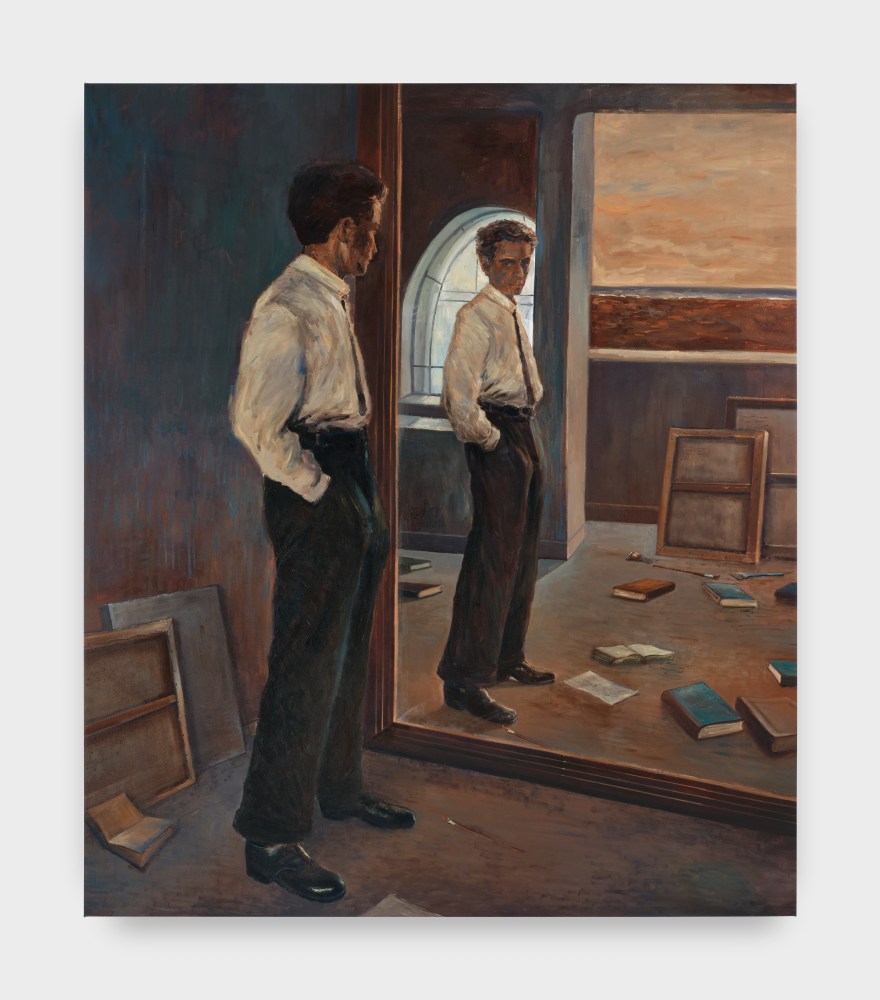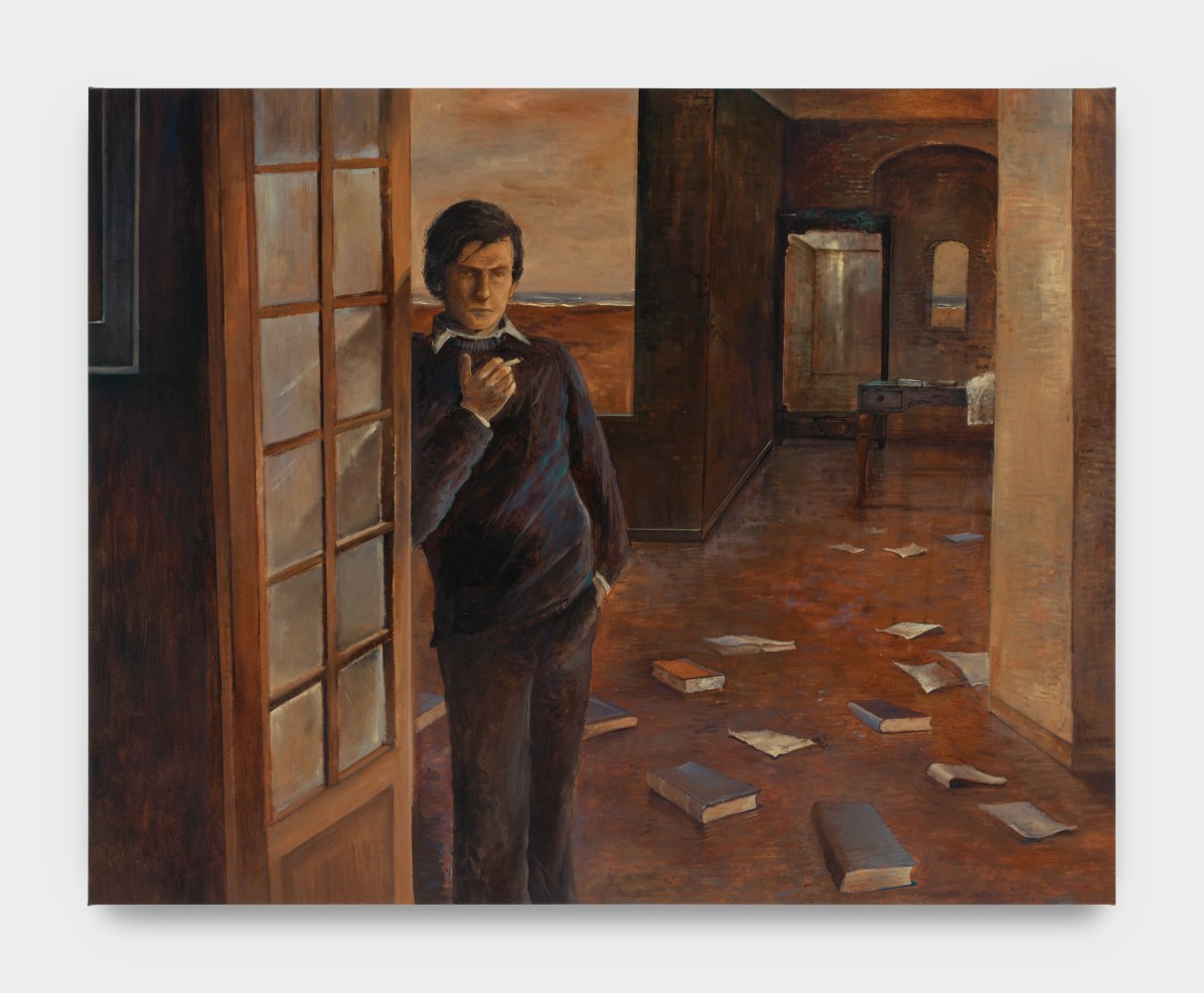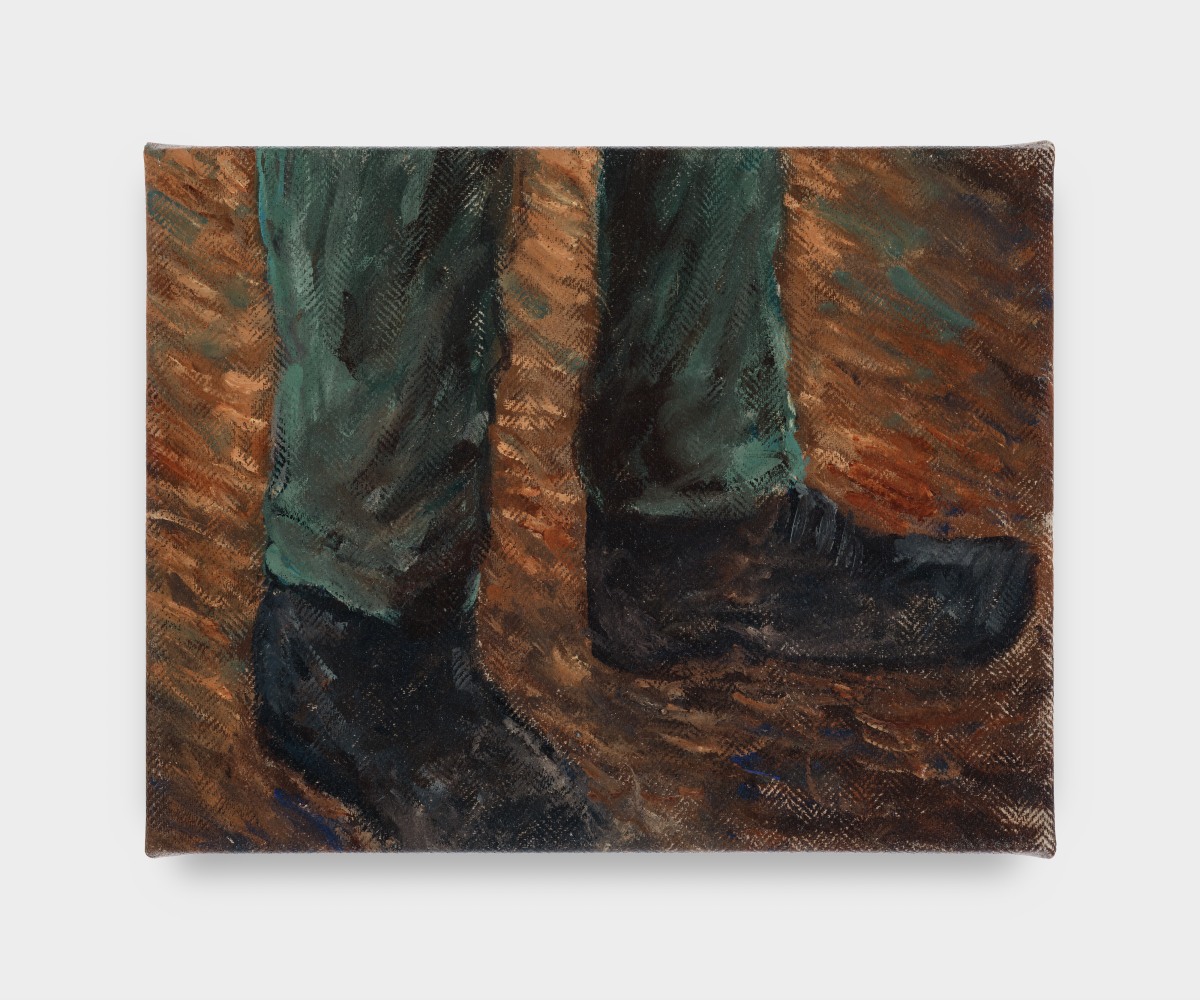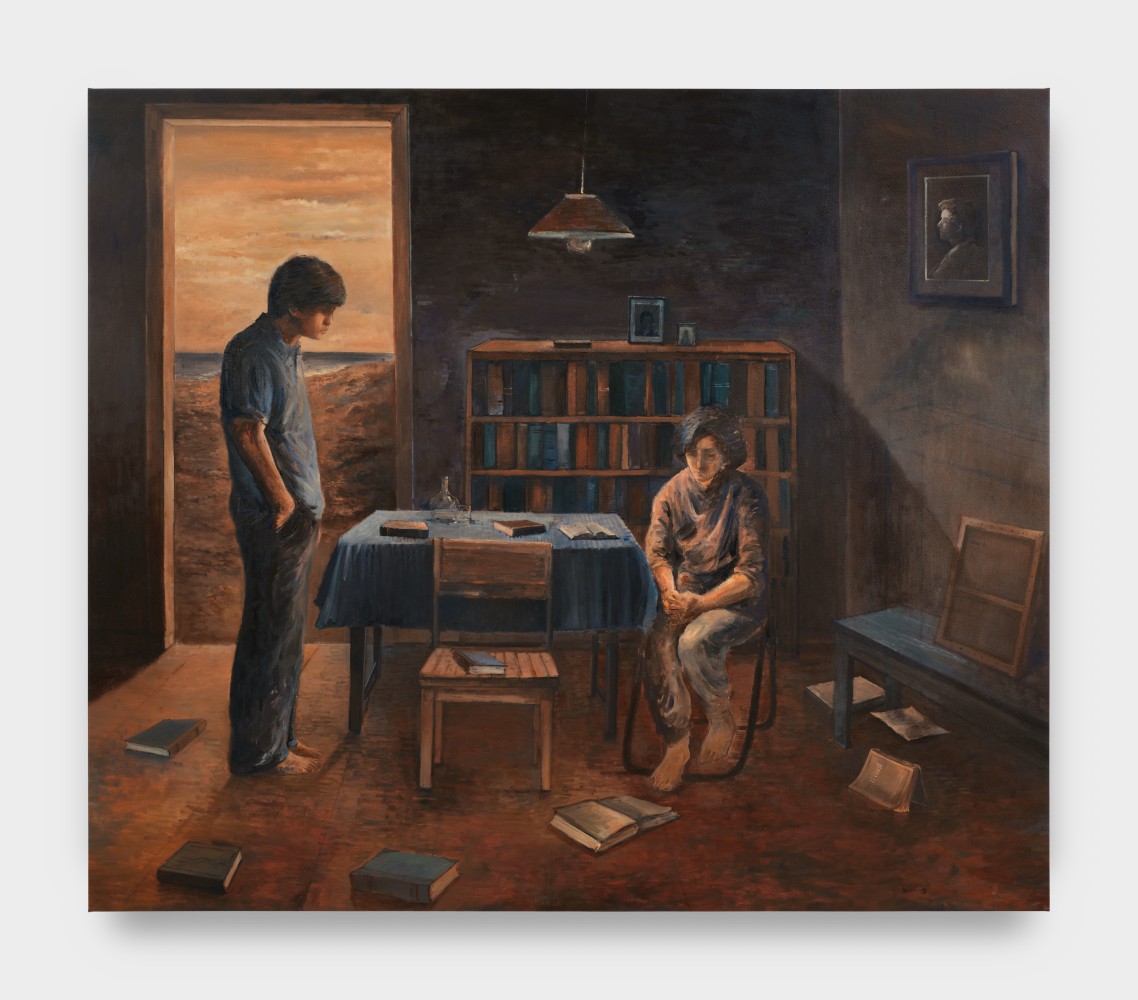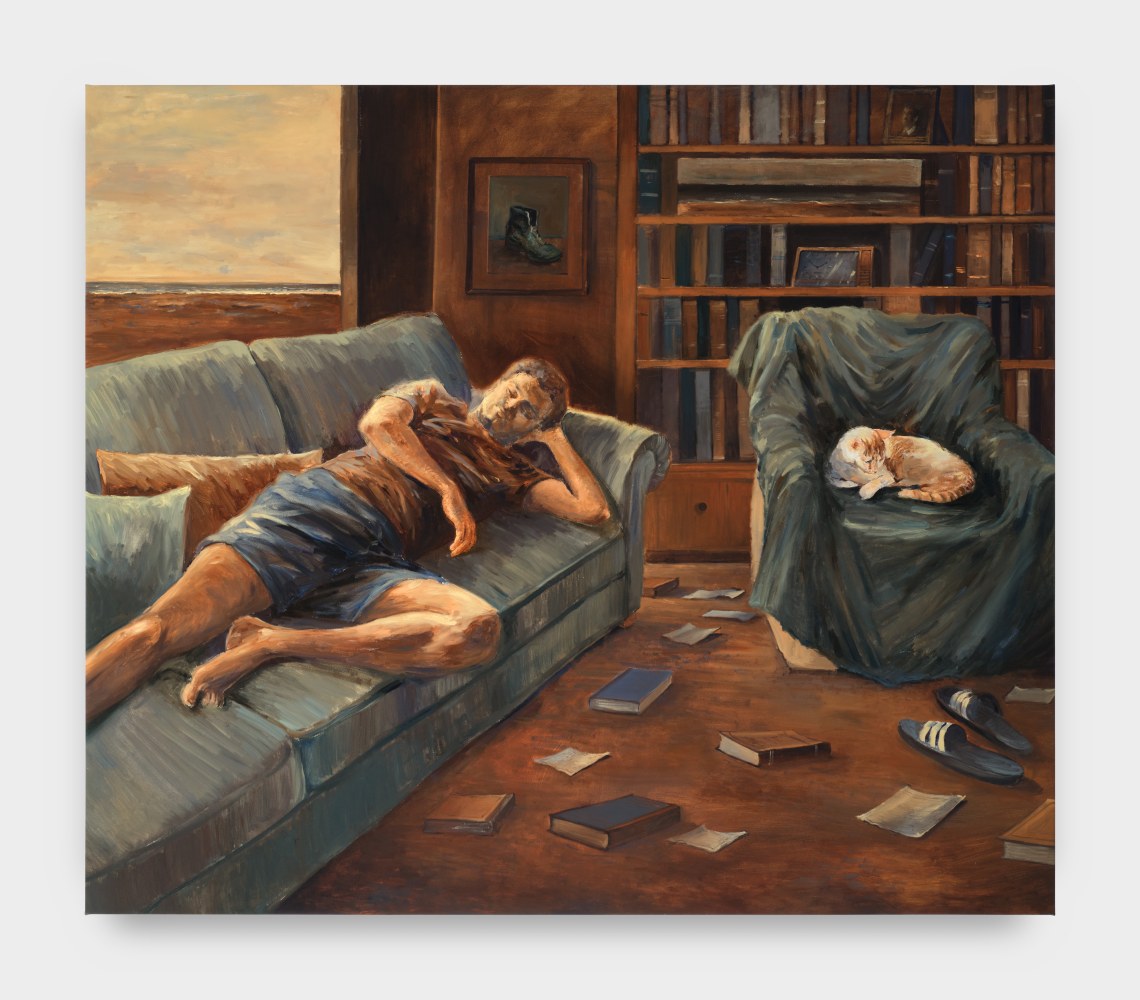Night Gallery is pleased to announce Lost Time, a presentation of new oil paintings by American-Pakistani artist Zaam Arif. This is the artist’s first solo exhibition with the gallery.
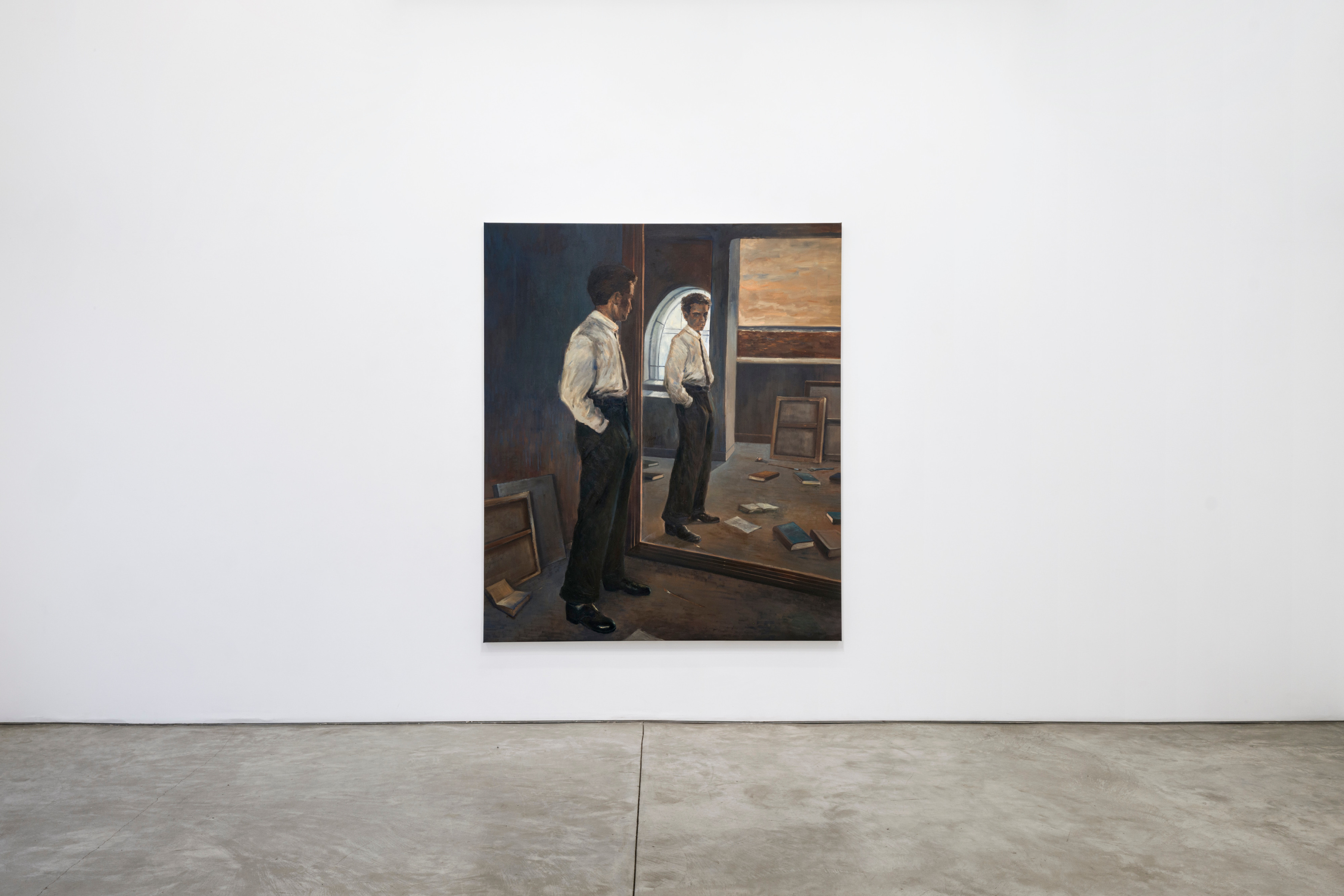
Zaam Arif, Lost Time, installation view, 2025
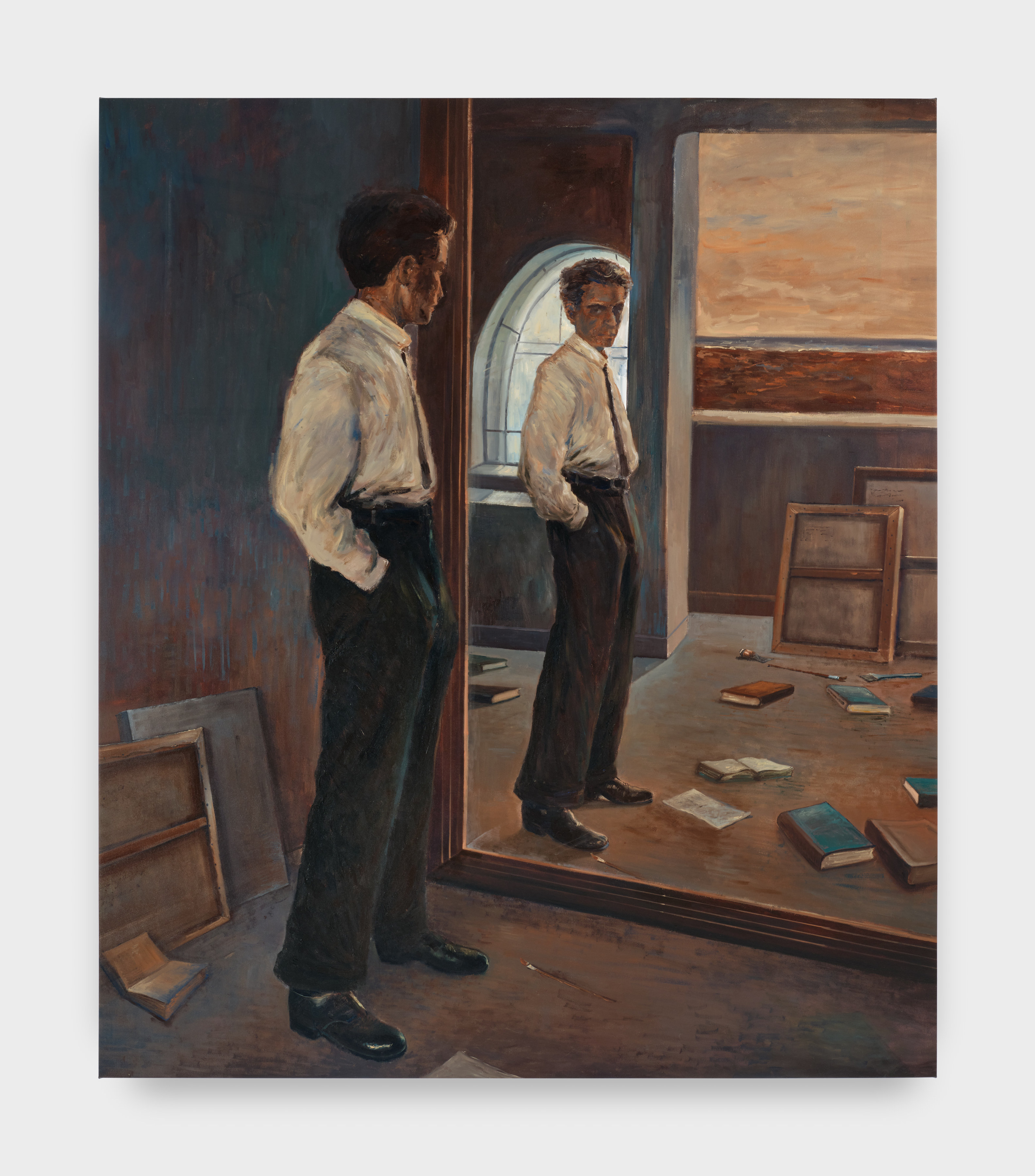
Zaam Arif, Egon, 2025
The Romantic writer John Keats once observed that all one needs to write poetry is a “feeling for light and shade.” Zaam Arif’s cinematic compositions make a similar case for painting. Arif modulates illumination and darkness throughout his canvases for Lost Time. His sparsely populated interiors tarry the porous boundaries between day and night, photographs and reality, memories and waking dreams.
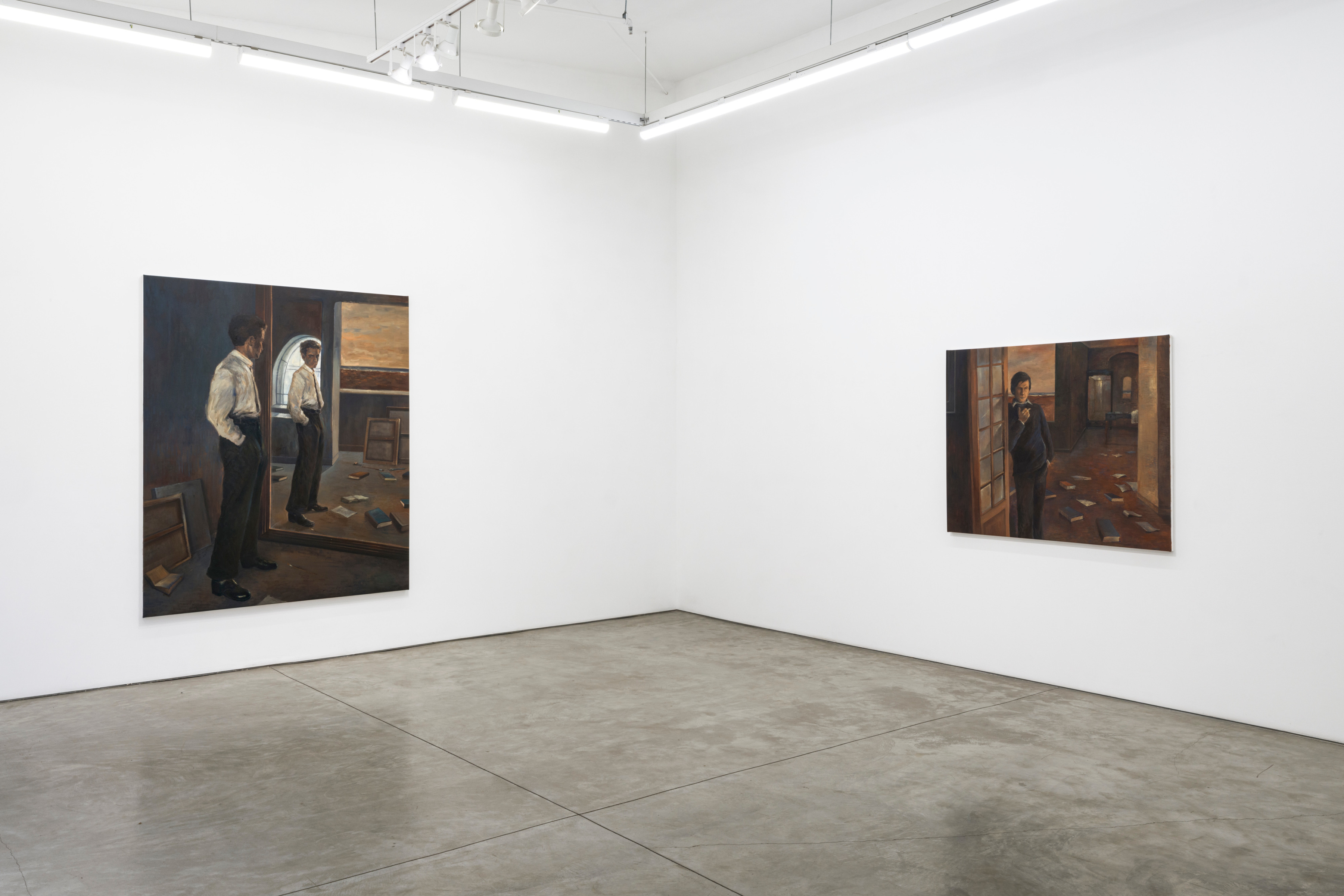
Zaam Arif, Lost Time, installation view, 2025
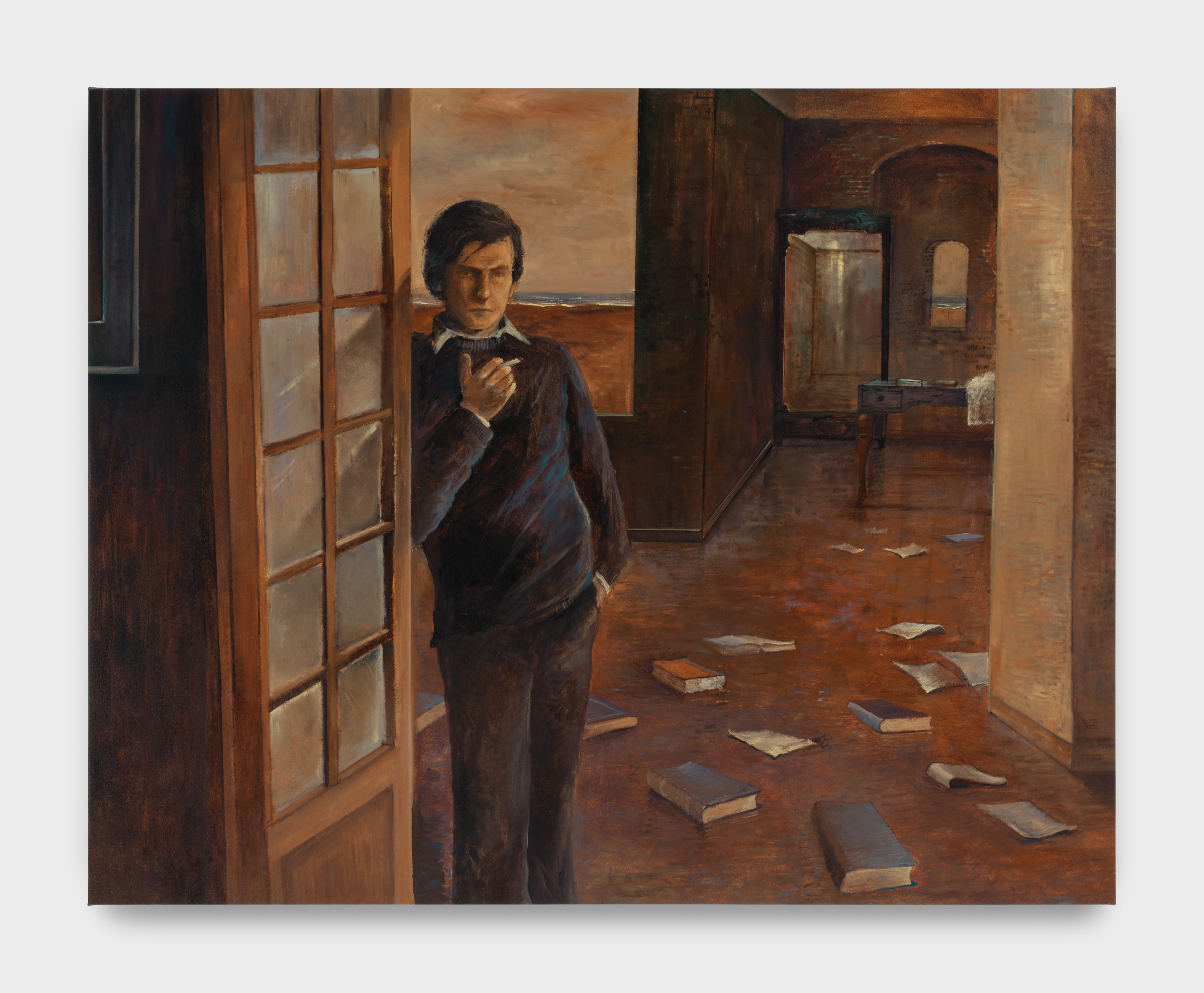
Zaam Arif, Nostalgia, 2025
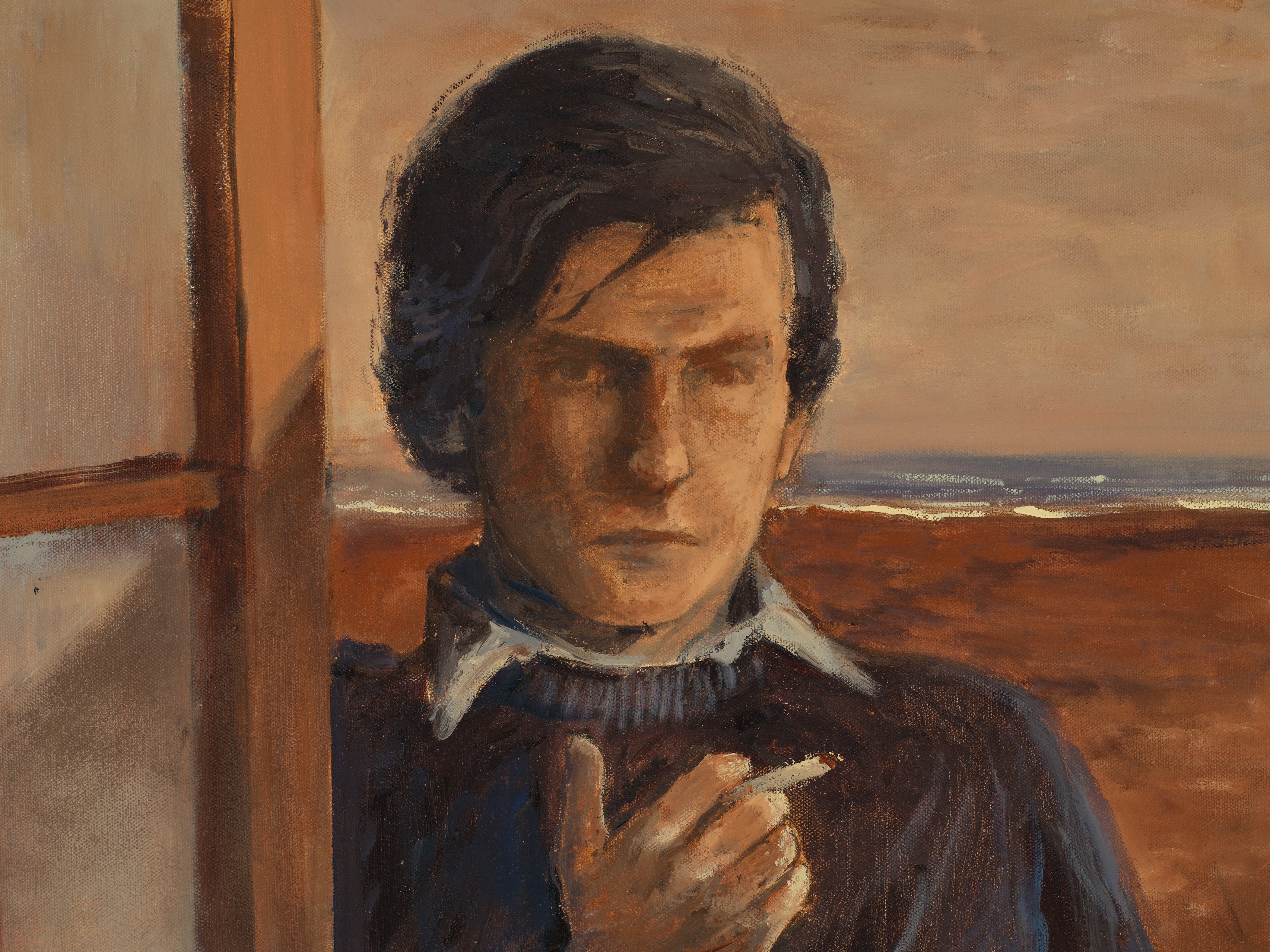
Zaam Arif, Nostalgia, detail, 2025
Arif was raised in a family of painters. He sought to forge his own path, studying physics before pursuing the more subjective fields of literature, music, photography, and film. He finally heeded the call to painting, though his syncretic interests continue to inform his practice. Many of Arif’s compositions incorporate characters, architectural details, and atmospheres drawn from the novels of Marcel Proust and Fyodor Dostoevsky and the films of Andrei Tarkovsky and Edward Yang.
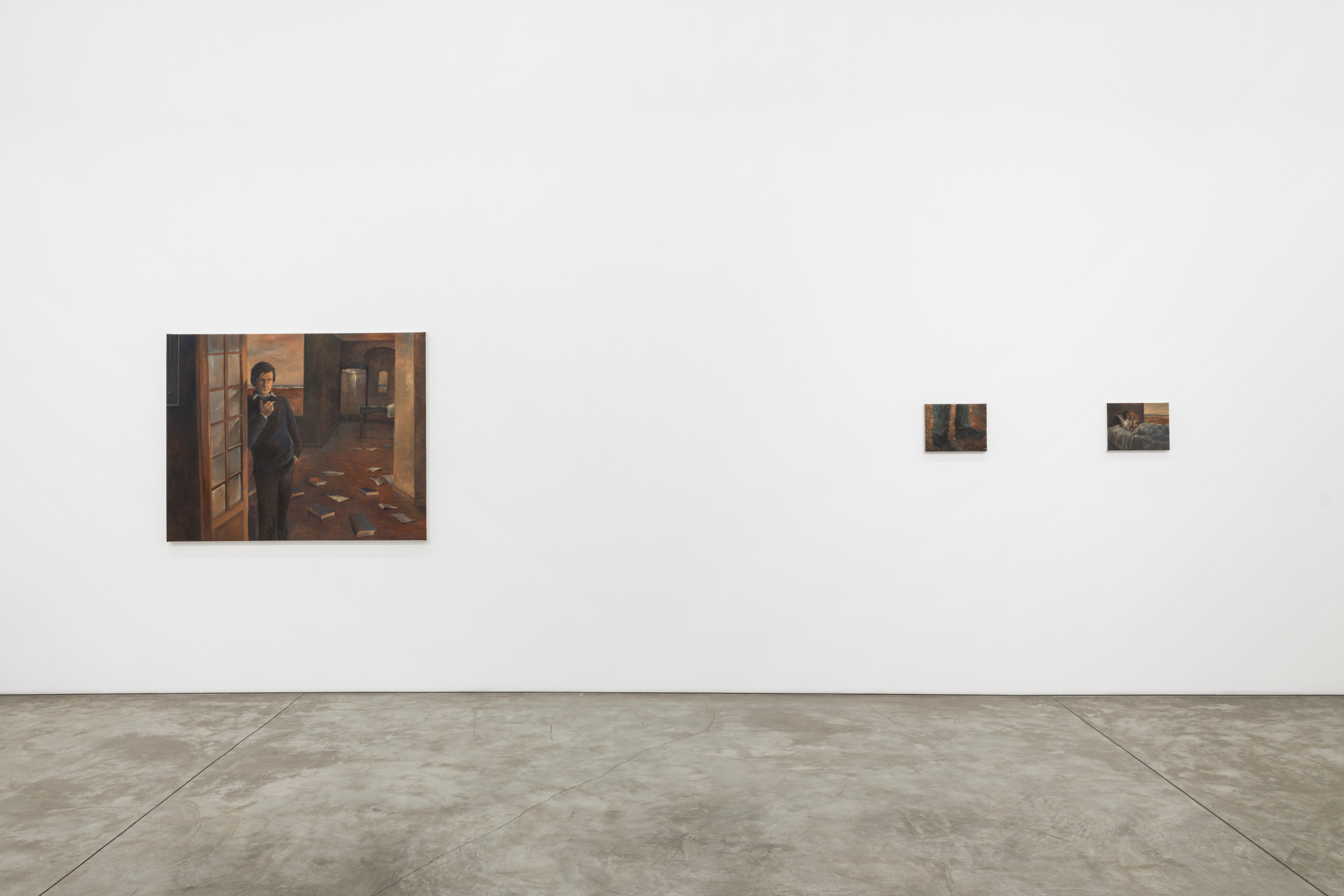
Zaam Arif, Lost Time, installation view, 2025
Arif’s process always begins with a sketch, which he translates to canvas via a process of trial and error, trust and revelation. He poses a question and moves oil paint towards new, interpretive possibilities. The subjects are, fittingly, male figures in moments of rumination or repose. They are alternately finely limned or blurred out, rendered in impasto or lambent brushstrokes. Arif frames them within domestic interiors or subsumes them in dark wood paneling and barren walls. In Lost Time (all works 2025), for example, a boy stands in a light-filled doorway, while a seated woman in front of him fades into a shadowed corner. The relationship between these figures, and between the pair and their environment, remains mysterious.
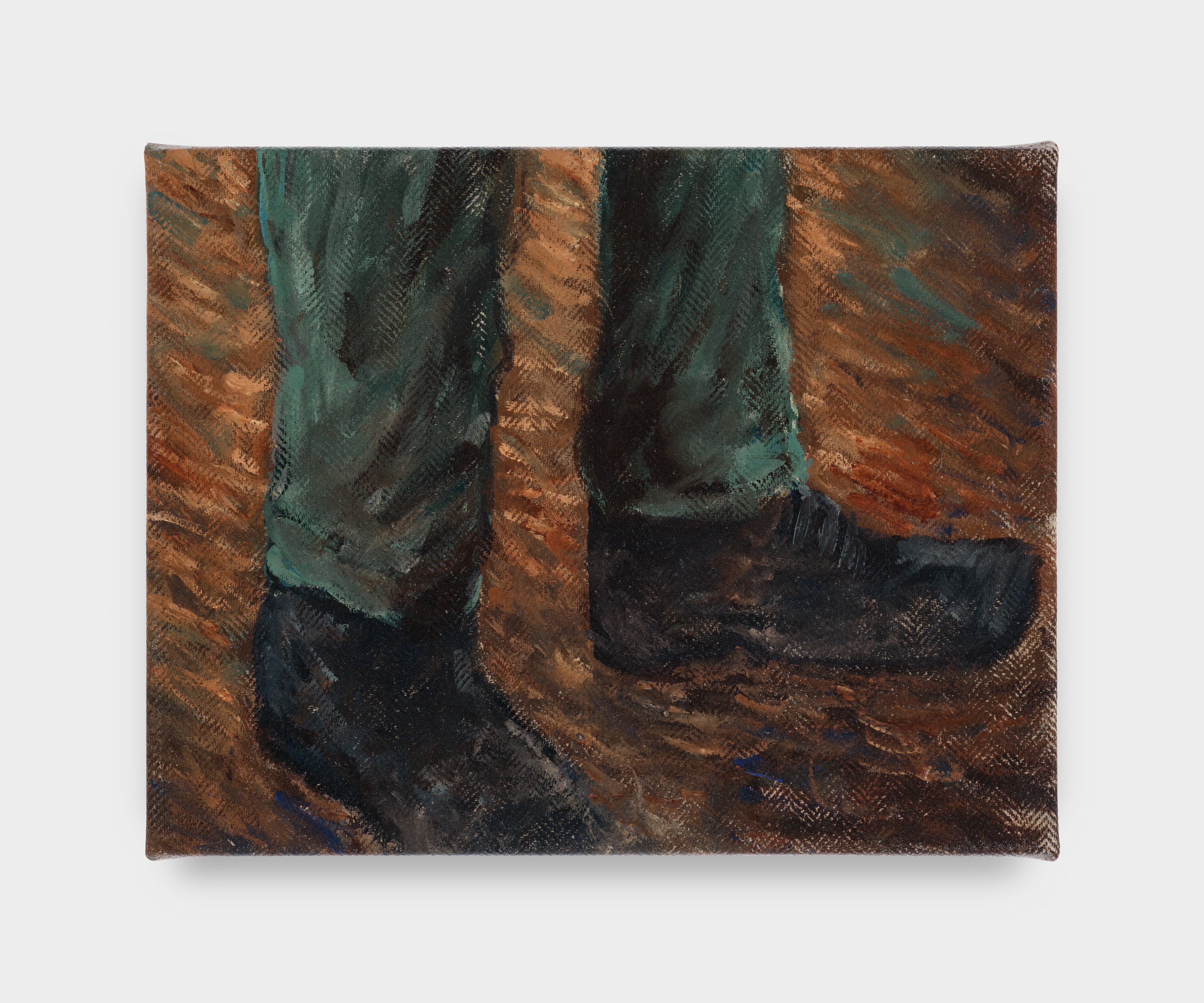
Zaam Arif, A Study in Looking, 2025
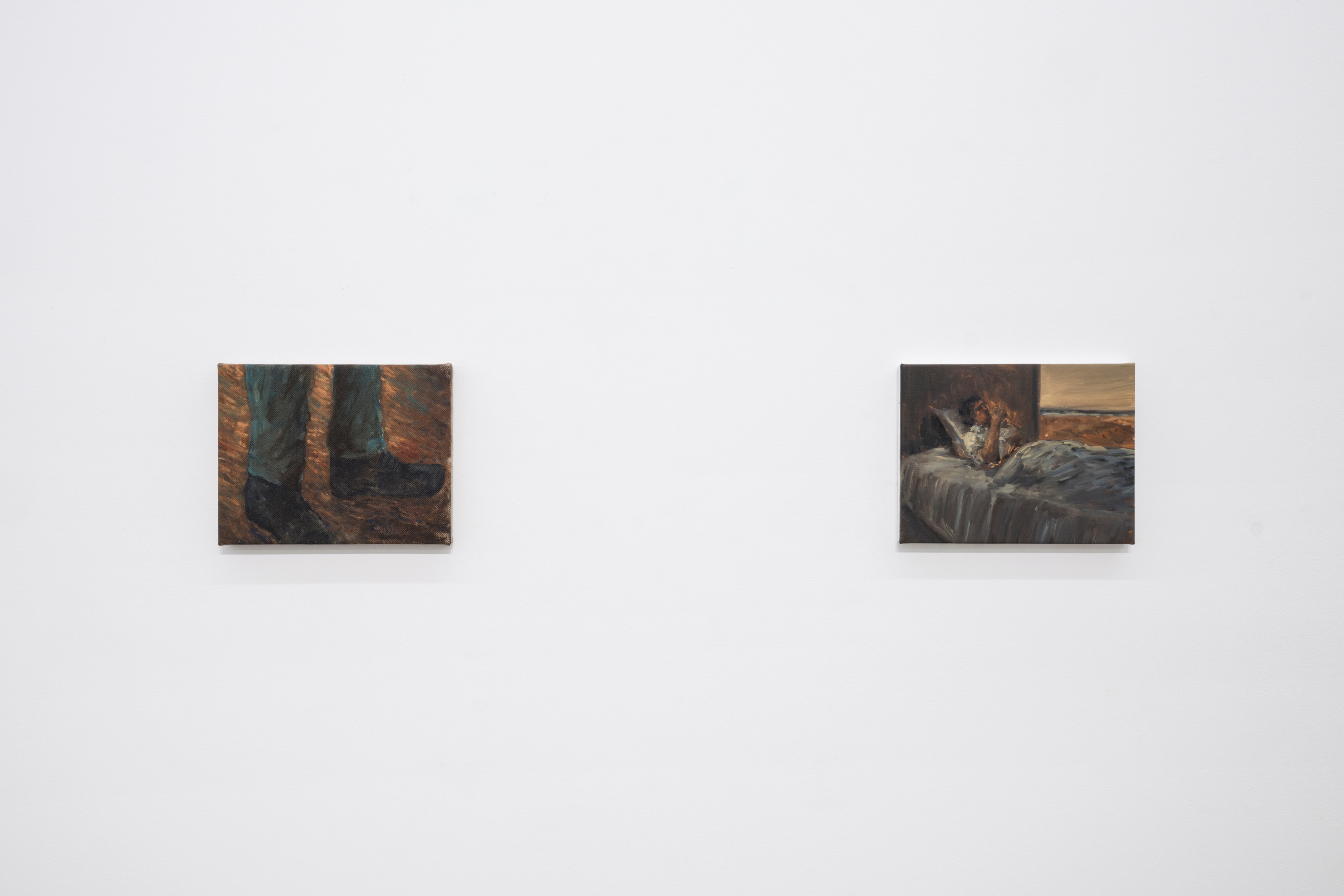
Reza Aramesh, Fragment of the Self, installation view, 2025

Zaam Arif, The Sound of Disquiet, 2025
While some figures resemble fictional characters, others reflect the artists who inspired them. The stark, mirrored profile in Egon, for example, recalls the bedeviled countenance in Austrian painter Egon Schiele’s innumerable self-portraits. And the man in The Memory of the Self who ponders a table scape with a hardback book, crystalline bottle, and glass, inspired by paintings of the late Pakistani artist Colin David. Arif sublimates the original likenesses into new images that integrate fragments of other aesthetic references, half-remembered dreams, and the artist’s distant memories.
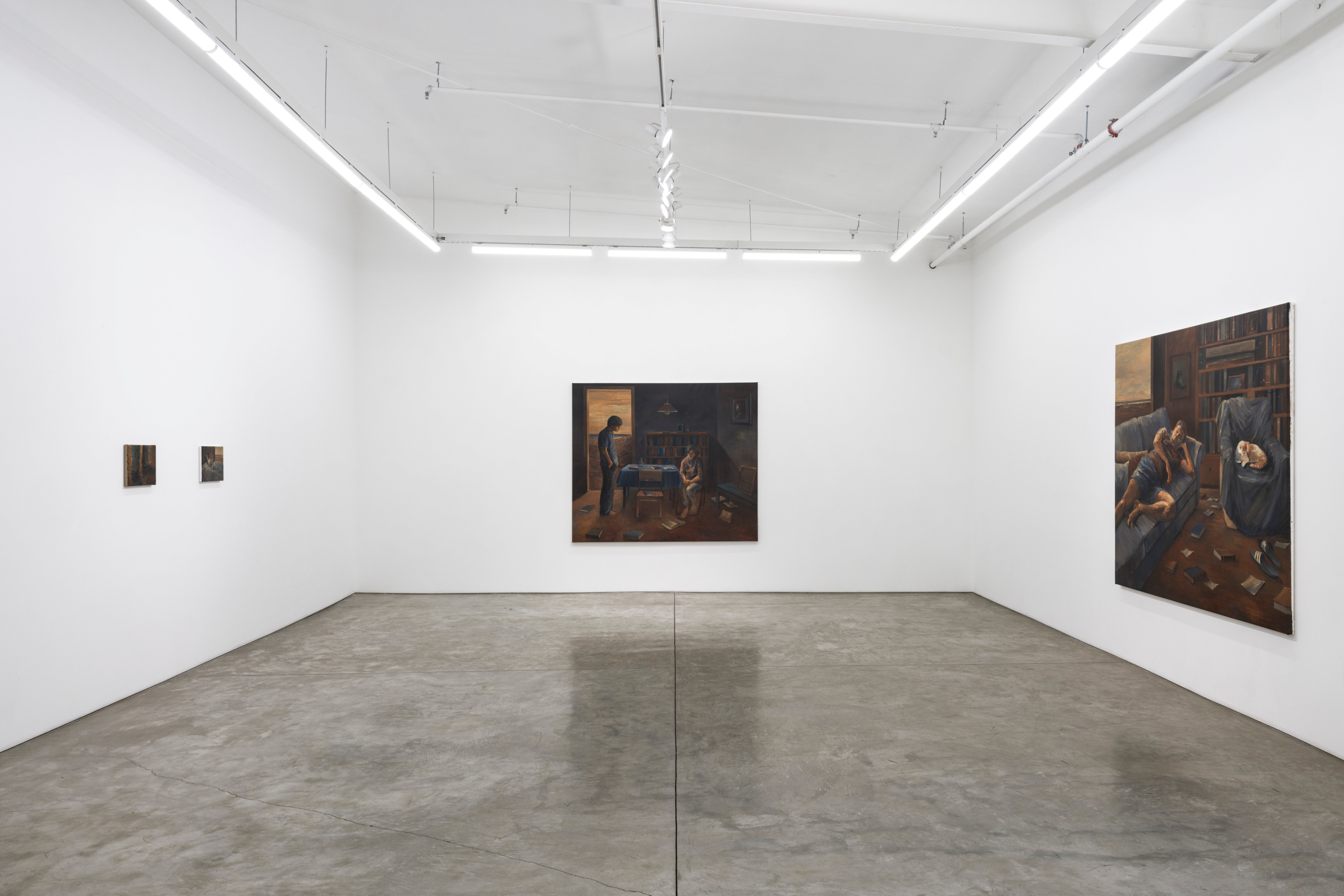
Zaam Arif, Lost Time, installation view, 2025
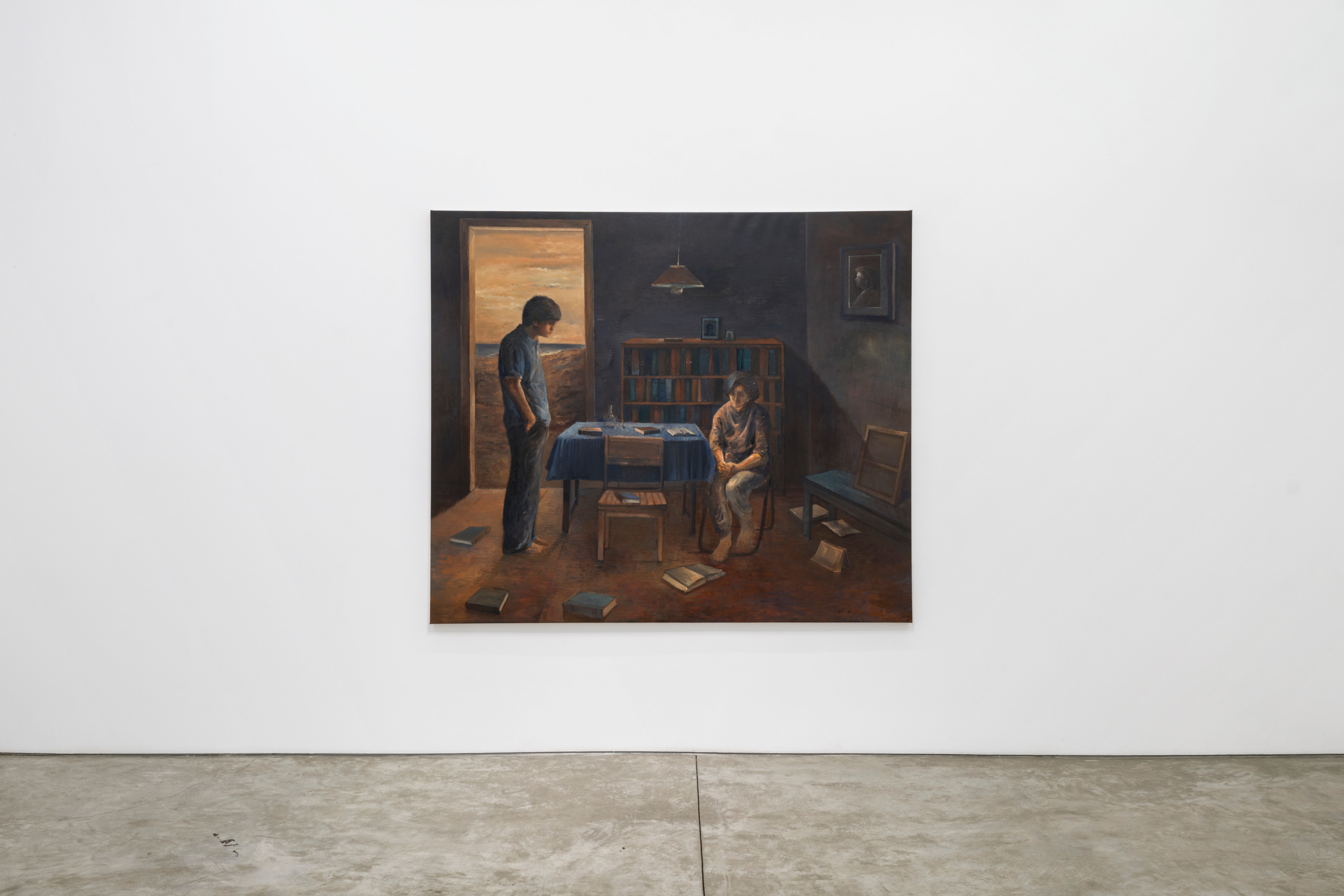
Zaam Arif, Lost Time, installation view, 2025
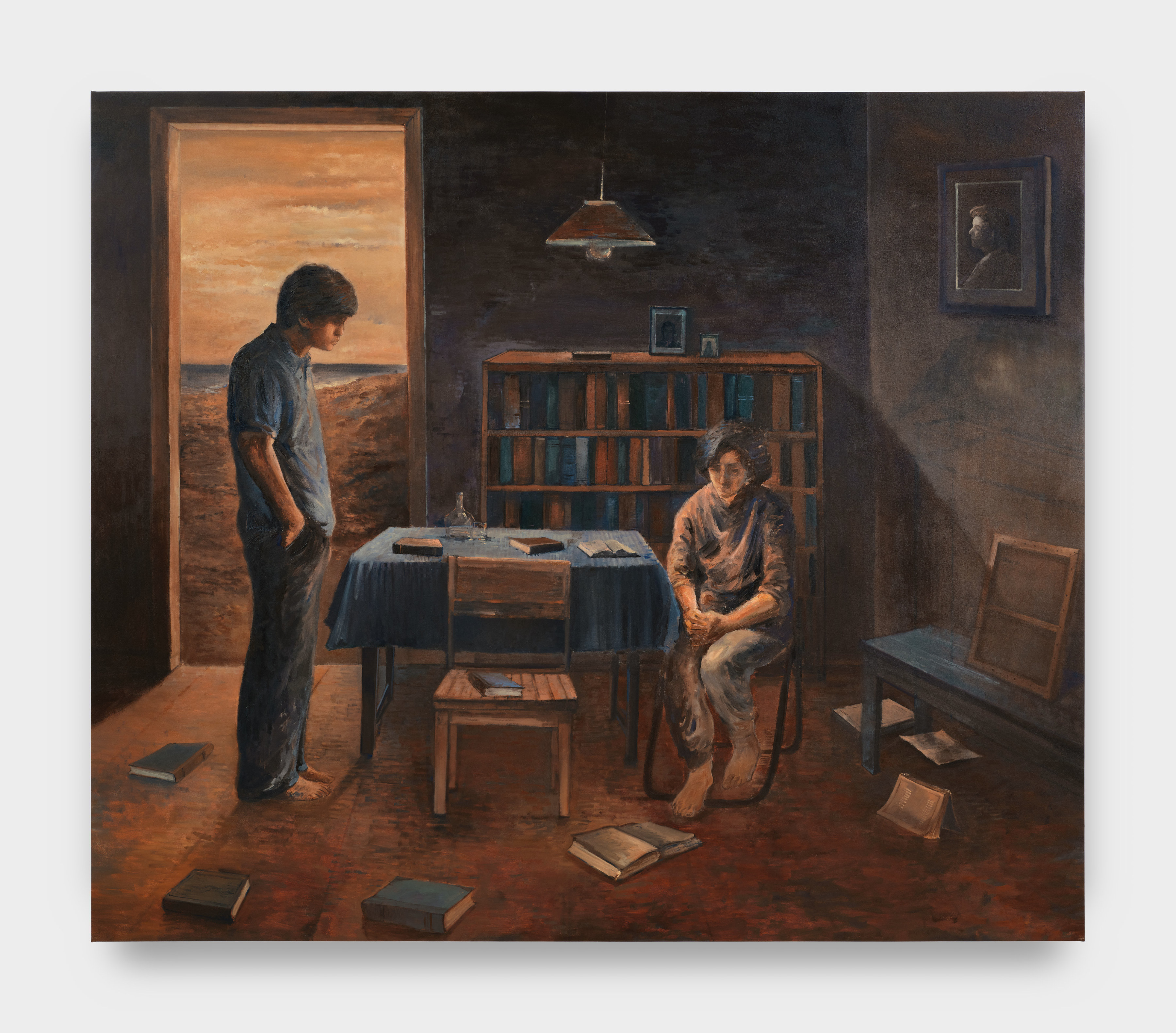
Zaam Arif, Lost Time, 2025
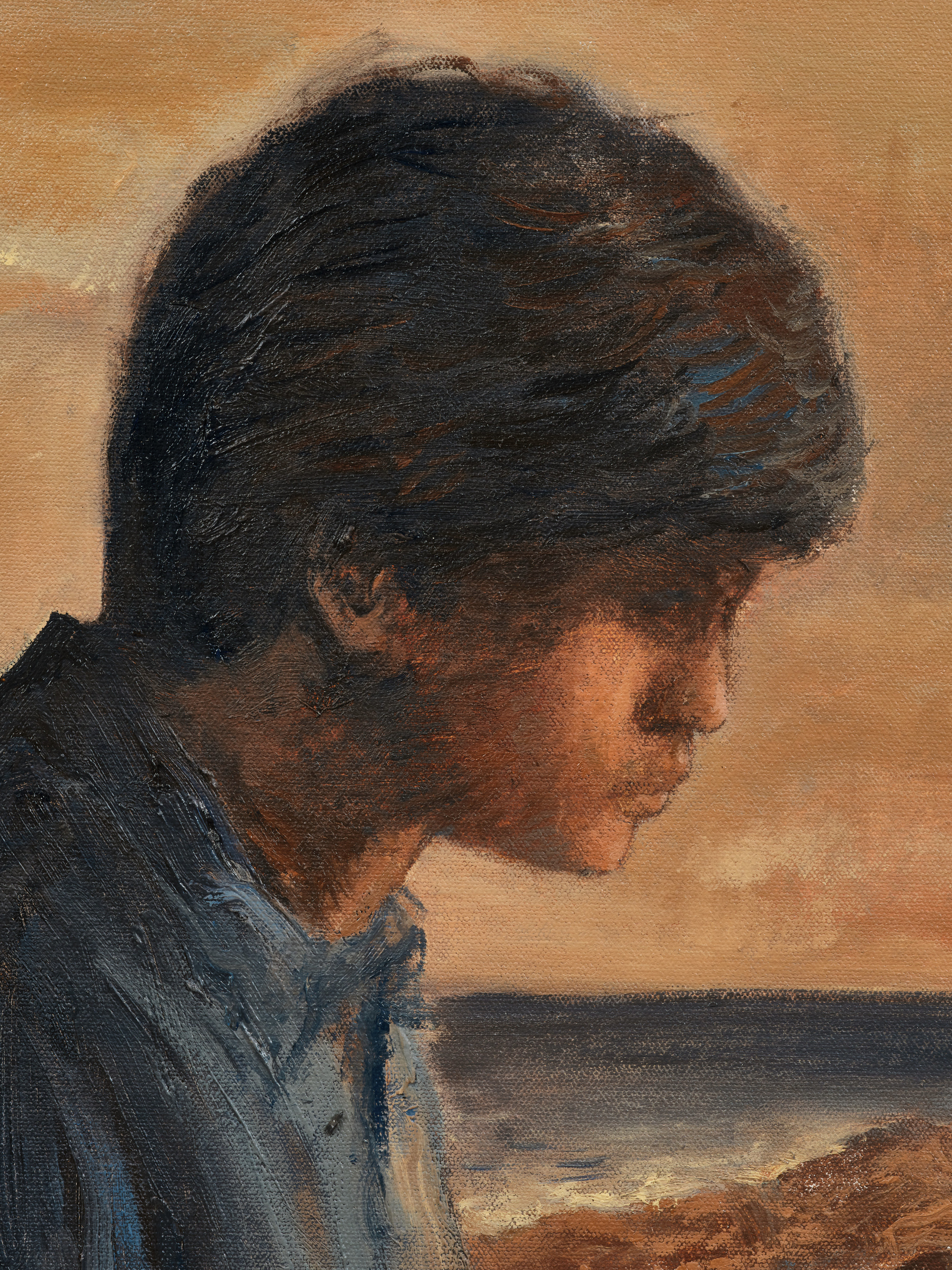
Zaam Arif, Lost Time, detail, 2025
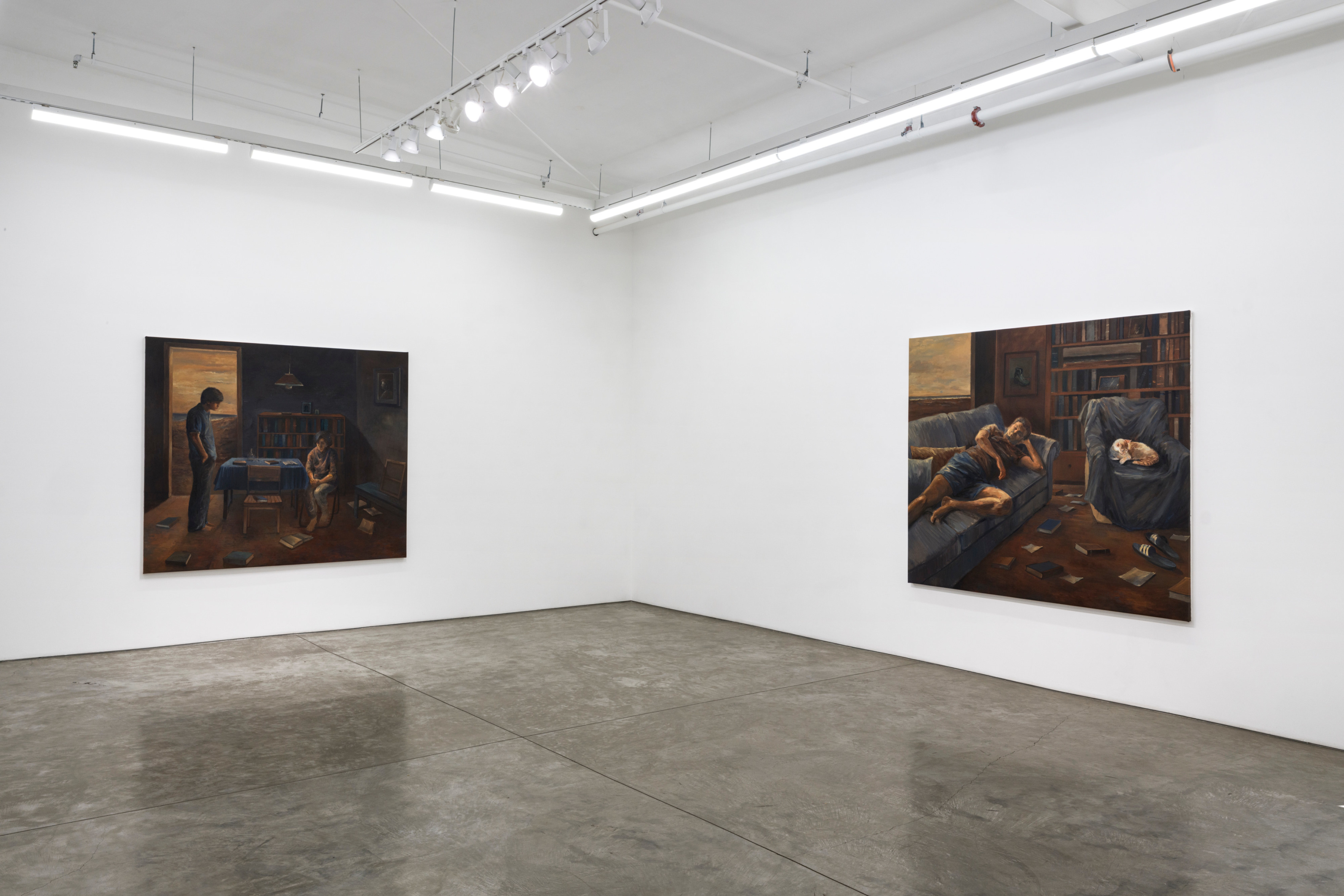
Zaam Arif, Lost Time, installation view, 2025

Zaam Arif, Collected Fictions, 2025
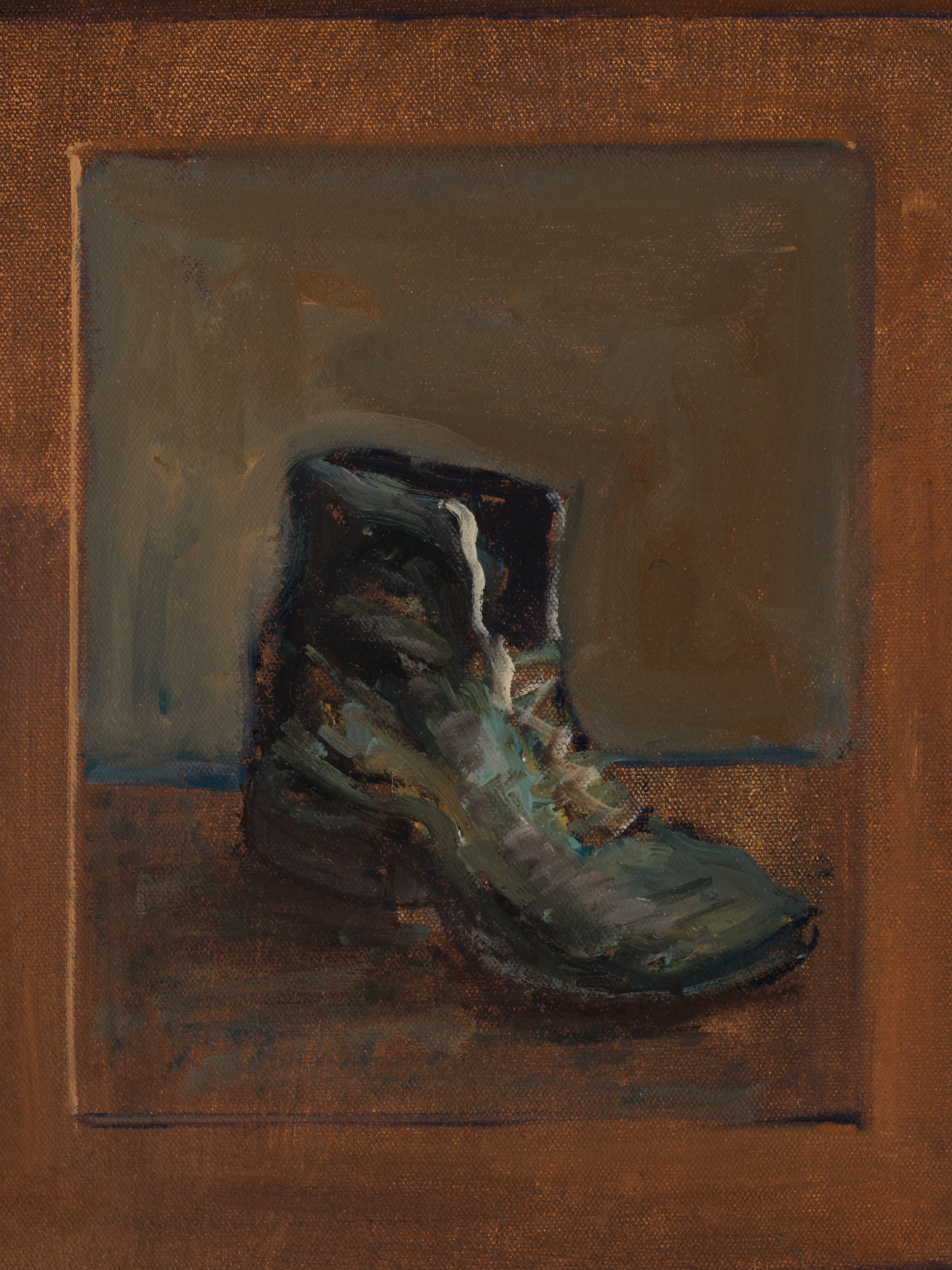
Zaam Arif, Collected Fictions, detail, 2025
Arif’s palette features an unabridged thesaurus of browns—sienna, umber, taupe, and yellow ochre—punctuated by blues. These tones make his compositions both antiquated and timeless as they give his presentations a cohesive, immersive sensibility. Though the scenes may belong to different stories, they’re culled from the same world of rutilant light and burnished shadows. The paintings appear subdued and filmy, as if seen through a scrim. The style reflects the ineffable sense of loss that accompanies the passage of time. It also harkens back to the classic films and novels that inspired the work. Proust, the author from whom the show borrows its title, notes that instead of seeing one world, we see it multiplied by all the artists, and their wholly original worlds, that came before.
–Tara Anne Dalbow
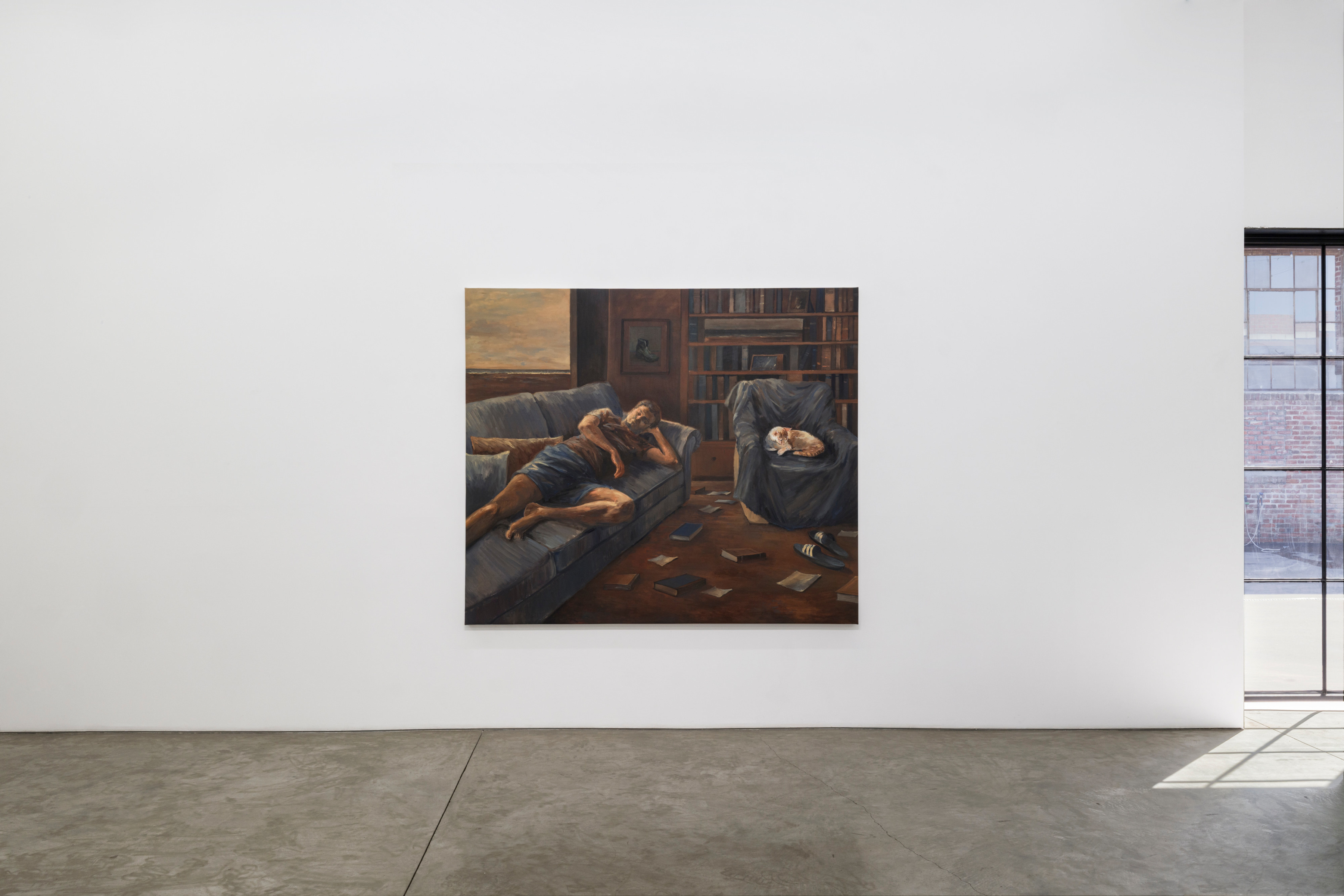
Zaam Arif, Lost Time, installation view, 2025
Zaam Arif is a Pakistani-American artist who lives and works in Houston, Texas. Arif's work was exclusively featured in The New Yorker magazine in 2021, making him the youngest Pakistani artist to be published in the prestigious magazine. In the same year, his work was selected to be exhibited in the Malamegi Lab Award and was awarded the Malamegi Lab Research Grant in Italy. Arif has shown in both solo and group shows all over the world, where he has been critically acclaimed for showing new frontiers in the crossover of South Asian and Western culture, literature, and philosophy. His work is included in the public collections of Kiran Nadar Museum of Art, New Delhi, India; Samdani Art Foundation, Dhaka, Bangladesh; X Museum, Beijing, China; and CC Foundation, Shanghai, China.

